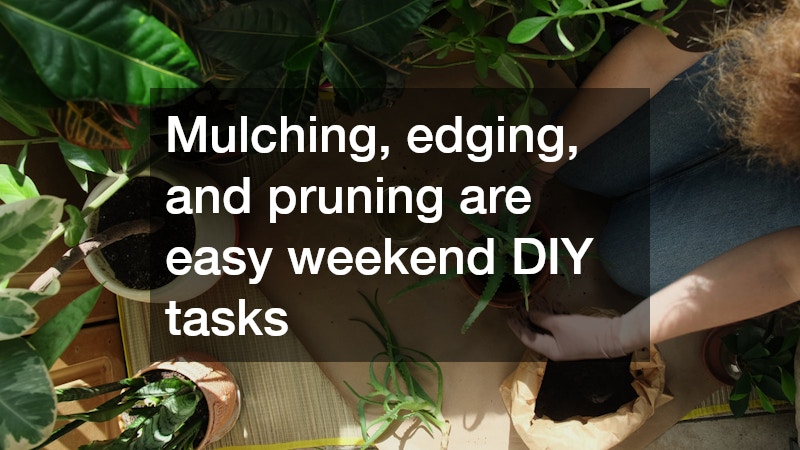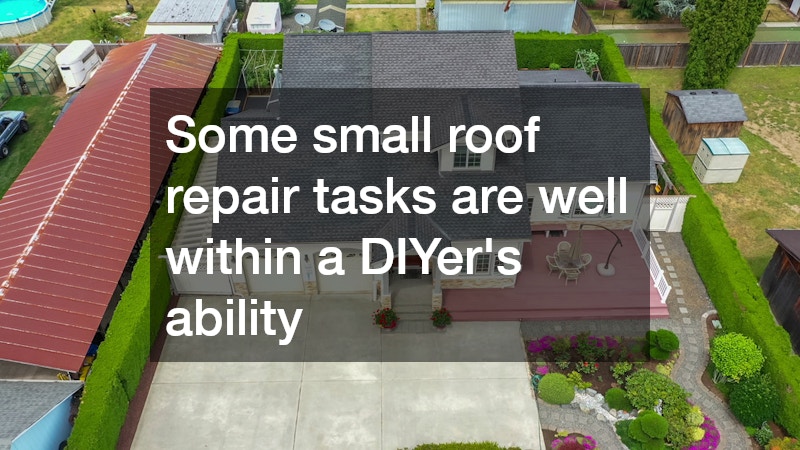
Homeowners today are more hands-on than ever. From small touch-ups to full-scale refreshes, doing it yourself has become a rewarding way to save money, learn new skills, and make your living space truly yours. Yet not every project is meant to be tackled solo. The secret to smart, budget-friendly home upgrades isn’t just knowing how to work with your hands—it’s knowing when to stop and call in a professional.
This guide explores the most worthwhile upgrades you can handle yourself, along with the bigger projects that deserve expert attention. You’ll discover how to stretch your budget, protect your investment, and keep your home in excellent shape year-round.
I. Start Small: Affordable Weekend Projects That Pay Off
Every successful homeowner understands that small, consistent improvements make a massive difference over time. Many of these tasks require only basic skills and tools—but the rewards can be long-lasting and cost-saving.
Extend the Life of Your Tools
Learning the basics of tool repair is one of the smartest moves for any DIYer. Worn-out drill batteries, dull saw blades, or rusty hand tools can make even simple projects frustrating and inefficient. Instead of tossing them, clean and maintain them.
-
Remove rust with vinegar and steel wool.
-
Sharpen blades regularly and apply oil to metal parts to prevent corrosion.
-
Replace batteries or cords instead of replacing the entire tool.
Keeping your tools in top shape saves money and ensures safety when you take on bigger home projects. Many local hardware stores even offer sharpening or small repair services for a fraction of the cost of new equipment.
Boost Curb Appeal with Yard Care
Another high-impact, low-cost project is lawn fertilizing. It’s one of the easiest DIY tasks that instantly elevates a property’s appearance. Healthy, lush grass not only looks great but also helps prevent soil erosion and weed growth.
Tips for effective lawn fertilizing:
-
Choose a slow-release fertilizer for steady growth.
-
Apply during early morning or late afternoon to reduce evaporation.
-
Water deeply after applying to help nutrients absorb.
-
Keep kids and pets off the lawn for at least 24 hours after treatment.
For those with large yards or uneven soil conditions, it may be worth consulting a local garden center for customized soil testing or seasonal fertilizer plans.
II. Protecting Your Home from the Top Down
Your home’s roof does more than keep out the rain—it protects everything beneath it. Regular maintenance is key to preventing costly structural damage and keeping your property energy efficient.
Handle Minor Fixes on Your Own
Some small roof repair tasks are well within a DIYer’s ability. You can safely handle:
-
Replacing a few missing shingles after a storm.
-
Cleaning gutters and downspouts to prevent water pooling.
-
Applying roof sealant to small cracks or leaks.
-
Inspecting flashing around chimneys and vents.
Performing these tasks twice a year—ideally in spring and fall—can extend your roof’s life by several years. Always prioritize safety: use a stable ladder, wear non-slip shoes, and avoid climbing onto wet or steep roofs.
Know When It’s Time for a Full Replacement
At some point, maintenance won’t be enough. A roof replacement becomes necessary when:
-
Shingles curl, crack, or lose granules.
-
The roof is over 20 years old.
-
Leaks occur frequently despite repairs.
-
Daylight shines through attic boards.
A replacement may seem costly upfront, but it prevents water damage, mold, and insulation problems that could multiply expenses later. Professional roofing services also come with warranties that protect your investment for years to come.
III. Keeping Your Home Comfortable Year-Round
Comfort is about more than temperature—it’s the feeling of stability and efficiency throughout your home. Keeping your heating and cooling systems in good condition plays a huge role in that comfort.
The DIY Approach to System Maintenance
Simple ac repairs are achievable for homeowners who follow proper safety steps. Regular upkeep helps reduce power bills and prevent sudden breakdowns.
DIY maintenance checklist:
-
Clean or replace air filters every 1–3 months.
-
Clear debris from outdoor condenser units.
-
Check for condensation leaks or clogged drain lines.
-
Inspect thermostat batteries and settings.
If you notice refrigerant leaks, electrical issues, or poor airflow even after cleaning, call a licensed HVAC technician. These systems involve pressurized gas and electrical wiring, which require professional handling.
Caring for Your Pool the Smart Way
If you’re lucky enough to have a backyard pool, basic upkeep can often be done without professional help. Skimming, brushing, and checking chlorine levels are easy DIY routines. However, for more complex tasks—like balancing pH, repairing pumps, or addressing algae blooms—consider scheduling pool services a few times a year.
Professionals can handle deep cleaning, equipment inspections, and chemical balancing far more accurately, helping you avoid damage and keeping the water safe for your family.
IV. Upgrading Outdoor Spaces for Function and Style
Outdoor areas are extensions of your home—spaces for gathering, relaxing, or simply enjoying fresh air. Even on a budget, you can transform your yard into a beautiful, functional oasis.
Plan and Design Your Landscape
Simple improvements like planting native species or adding garden beds go a long way toward visual appeal. Mulching, edging, and pruning are easy weekend DIY tasks. But for large-scale projects, professional landscapers bring essential expertise.
When to hire landscapers:
-
If your property has poor drainage or erosion issues.
-
When installing patios, retaining walls, or irrigation systems.
-
For complete design planning that fits your property’s layout.
A good landscaper can also help you choose plants that thrive in your local climate, reducing maintenance costs over time.

Safe Heavy Lifting for Outdoor Projects
If you’re adding large structures—like pergolas, decks, or heavy sculptures—you might need a local crane rental service. Renting a crane for a day or even a few hours can make moving materials or lifting heavy items much safer.
Always get guidance from the rental company on load limits and safety procedures. While this may seem like an unusual resource for a homeowner, it’s often far cheaper than hiring an entire construction crew for simple lifts or installations.
V. Practical Interior Improvements That Add Convenience
Not all upgrades are about aesthetics—some are about everyday convenience. From functional garage updates to maintaining reliable tools, these projects improve how your home works day to day.
Improve Garage Functionality
Your garage is both a storage hub and a security feature. Routine maintenance keeps it efficient and safe.
DIY-friendly tasks include:
-
Lubricating door tracks and rollers.
-
Replacing worn-out weather stripping.
-
Painting or sealing the floor to resist moisture.
For mechanical issues like faulty springs, sensors, or openers, call a garage door company. These components are under high tension and can be dangerous to repair without proper training or tools. A professional tune-up once a year helps ensure smooth operation and reduces wear.
Keep Tools in Working Order
Even for indoor projects, your progress depends on the condition of your tools. Routine tool repair prevents delays and saves money over replacing items unnecessarily.
Organize tools in a clean, dry space and periodically check for rust or damage. Repair kits are inexpensive and widely available, and learning to fix your own tools can extend their lifespan for decades.
VI. Making Big Moves: Organization and Space Optimization
A home upgrade doesn’t always require new materials—sometimes, reorganizing your existing space makes all the difference. Streamlining rooms can dramatically change how your home feels.
Rethink Your Layout
Simple rearrangements—like moving furniture away from walls or switching room purposes—can open up your space. Adding shelves or built-in storage reduces clutter and adds value.
But when heavy lifting is involved, hiring moving companies can be worth every penny. Professional movers can safely transport bulky items like pianos, appliances, or antique furniture. This prevents floor damage and personal injury—two common problems when homeowners try to do it alone.
Refresh Indoor and Outdoor Balance
After reorganizing interiors, balance the changes with outdoor upkeep. A green, healthy yard ties the whole home together. Regular lawn fertilizing keeps your exterior vibrant, making your property look fresh after an indoor refresh. Consider adding planters or vertical gardens near entryways to visually connect indoor and outdoor spaces.
VII. Knowing When to Call the Experts
Even the most capable DIYers encounter situations that exceed their comfort zone. Recognizing when to bring in professionals is vital—not just for safety, but also for protecting your home’s long-term value.
Roofing and Structural Work
Tasks like a full roof replacement require experience, permits, and specialized equipment. Mistakes can cause leaks, mold, or structural instability. Professionals ensure materials are installed correctly and offer warranties that guarantee performance.
If your roof is sagging, leaking in multiple areas, or near the end of its lifespan, resist the temptation to patch it yourself. A certified roofer can inspect, estimate, and complete the work efficiently.
Mechanical and Electrical Systems
Complex ac repairs should never be DIY projects beyond simple cleaning or filter changes. Electrical issues, refrigerant handling, or compressor malfunctions require licensed technicians. Attempting these repairs yourself risks voiding warranties or causing system damage that’s far more expensive to fix later.
When hiring professionals, look for:
-
Proper licensing and insurance.
-
Clear, itemized quotes.
-
References or online reviews.
-
Warranty or service guarantees.
Hiring wisely doesn’t just save time—it prevents major financial losses down the road.
VIII. Combining DIY and Professional Services for Maximum Savings
The smartest homeowners blend their DIY spirit with strategic outsourcing. By handling certain tasks yourself and bringing in professionals for others, you can balance cost savings with quality outcomes.
Collaborative Home Care
Many services work best as partnerships. For example:
-
Do your own weekly cleaning, then schedule quarterly pool services for deep maintenance.
-
Handle small planting projects yourself, but hire landscapers for major redesigns.
-
Clean your gutters, then have a roofing pro inspect for structural wear each year.
This collaborative approach ensures professional oversight without unnecessary expenses.
Planning and Sequencing Projects
Timing matters when combining DIY and expert work. A thoughtful sequence prevents redundancy and wasted money. For instance:
-
Complete small repairs before large installations to avoid undoing recent work.
-
Tackle prep tasks—like clearing debris or painting base layers—before pros arrive.
-
Schedule projects seasonally: interior fixes in winter, outdoor projects in spring or fall.
By blending self-reliance with expert support, you maintain control over your budget while ensuring professional-quality results.
Even the most experienced DIYers can benefit from smarter spending habits. Stretching your budget isn’t about cutting corners—it’s about making informed decisions, working efficiently, and prioritizing projects that bring the most value. By approaching your home upgrades strategically, you can save money, reduce waste, and prevent costly repairs down the line.
1. Prioritize High-Impact Areas
When working on a limited budget, focus on projects that improve your home’s comfort, efficiency, and long-term value. While cosmetic updates like paint or décor are satisfying, high-impact improvements deliver measurable benefits for years.
Examples of high-impact upgrades:
-
Lighting improvements: Switching to energy-efficient LED bulbs or installing motion-sensor lights can reduce utility bills and enhance home safety.
-
Insulation and weatherproofing: Sealing gaps around windows and doors, adding attic insulation, or upgrading your thermostat improves energy efficiency and reduces heating/cooling costs.
-
Storage solutions: Installing shelves, closet organizers, or modular storage systems helps declutter your home, making spaces feel larger and more functional.
-
Preventive repairs: Fixing small plumbing leaks, loose outlets, or minor flooring issues before they worsen can save thousands in future repairs.
By tackling these areas first, you ensure your money is spent on improvements that truly impact your living experience and protect your investment.
2. Reuse and Repurpose Materials
Creativity is one of the most cost-effective tools for any homeowner. Materials you already have—or can acquire cheaply—can often be transformed into functional or decorative features.
Practical ideas for repurposing materials:
-
Old doors: Convert them into rustic dining tables, sliding barn-style doors, or headboards.
-
Leftover tiles: Use small tile scraps for backsplash accents, garden stepping stones, or decorative planters.
-
Wooden pallets: Turn them into outdoor seating, raised garden beds, vertical planters, or storage shelves.
-
Furniture updates: Refinish or repaint old cabinets, tables, or chairs instead of buying new items.
Additionally, consider checking local salvage stores, estate sales, or online marketplaces. These outlets often carry high-quality materials from previous construction or renovation projects at a fraction of retail prices. Repurposing not only saves money but also reduces waste, giving your upgrades an environmentally friendly edge.
3. Buy Tools and Materials Strategically
Tools and building materials are often among the largest expenses for DIYers. Making thoughtful purchasing decisions can prevent unnecessary spending.
Ways to buy smartly:
-
Seasonal sales: Home improvement stores often offer discounts during spring (DIY season kickoff) and late fall (inventory clearance).
-
Rewards programs and coupons: Join loyalty programs for cash-back offers, member discounts, or special promotions.
-
Rent or borrow tools: If you only need specialized tools occasionally—like tile cutters, pressure washers, or concrete mixers—renting is far cheaper than purchasing.
-
Estate sales and auctions: Professional-grade tools and gently used materials are often available at steep discounts, especially from contractors upgrading their own equipment.
When investing in tools, prioritize durability over the lowest price. A high-quality drill, ladder, or saw may cost more upfront but can last a decade or more, saving money and frustration in the long run.
4. Learn Basic Skills from Trusted Sources
Knowledge is one of your most valuable investments. Learning the right way to handle repairs and upgrades helps you avoid mistakes that can become costly. However, it’s essential to rely on reputable sources to ensure safety and quality.
How to build your DIY skills safely:
-
Community workshops: Many hardware stores and local community centers offer free or low-cost classes on carpentry, plumbing basics, and home maintenance.
-
Online tutorials: Platforms like YouTube or home improvement blogs are excellent resources—but stick to certified professionals or reputable channels with positive reviews.
-
Local classes and makerspaces: Some cities offer courses on woodworking, electrical basics, and other trades for beginners.
-
Manufacturer guides: Always review the instructions provided by product manufacturers for installations or repairs. Following these reduces mistakes and preserves warranties.
By gradually expanding your skills, you’ll gain confidence to tackle larger projects, reduce reliance on contractors, and ultimately stretch your budget further.
5. Keep a Maintenance Calendar
Preventive maintenance is often more valuable than expensive repairs or upgrades. Small problems—like a minor leak, clogged gutter, or worn-out filter—can escalate into major issues if ignored. Creating a maintenance calendar ensures these tasks are performed consistently.
Example seasonal maintenance schedule:
-
Spring: Inspect the roof and gutters, begin lawn care, fertilize grass, and test irrigation systems.
-
Summer: Service AC units, clean decks and driveways, and check windows and doors for air leaks.
-
Fall: Inspect the heating system, clean chimneys, rake leaves, and seal driveway cracks.
-
Winter: Check for drafts, insulate pipes, and organize storage areas to prevent damage from cold weather.
A digital or printed calendar can serve as a reminder, keeping you proactive instead of reactive. Regular maintenance protects your home, reduces emergency repair costs, and keeps every system running efficiently.
The Long-Term Payoff
By integrating these strategies—prioritizing impactful upgrades, repurposing materials, buying strategically, learning trusted techniques, and maintaining a calendar—your home remains in top condition without overextending your budget.
These habits help prevent surprise expenses, extend the life of tools and materials, and make even larger projects more manageable. With careful planning and consistent effort, you can maximize your home’s functionality, comfort, and resale value—all while keeping your finances under control.






